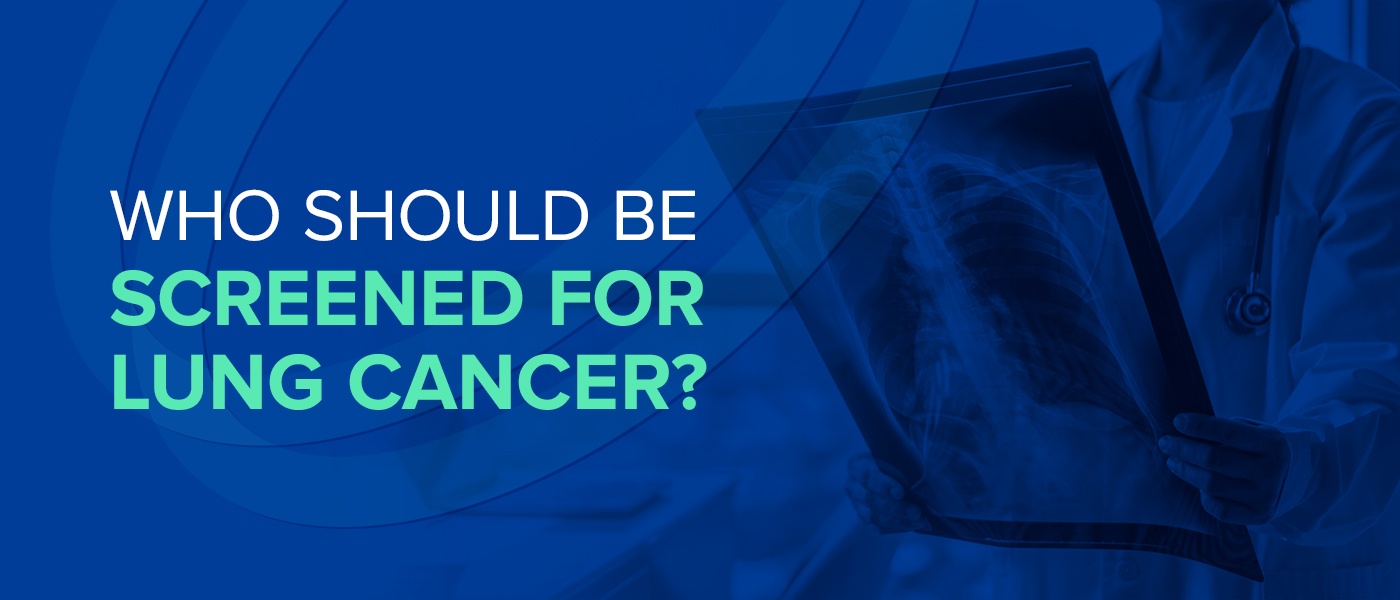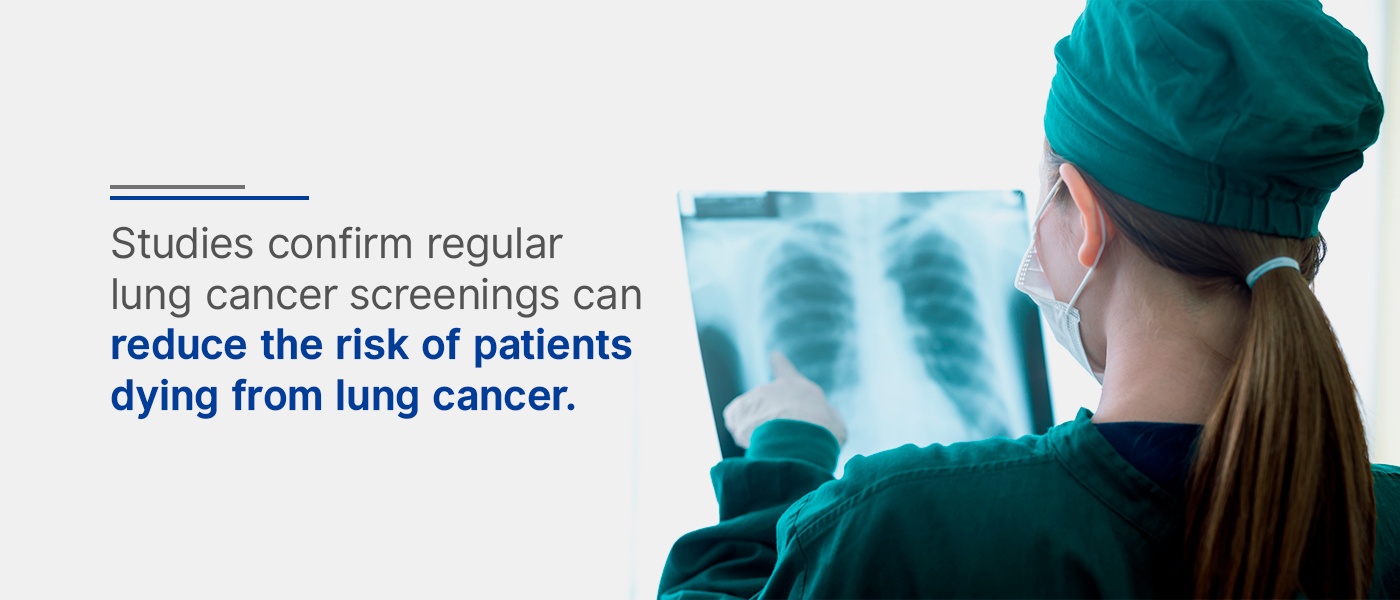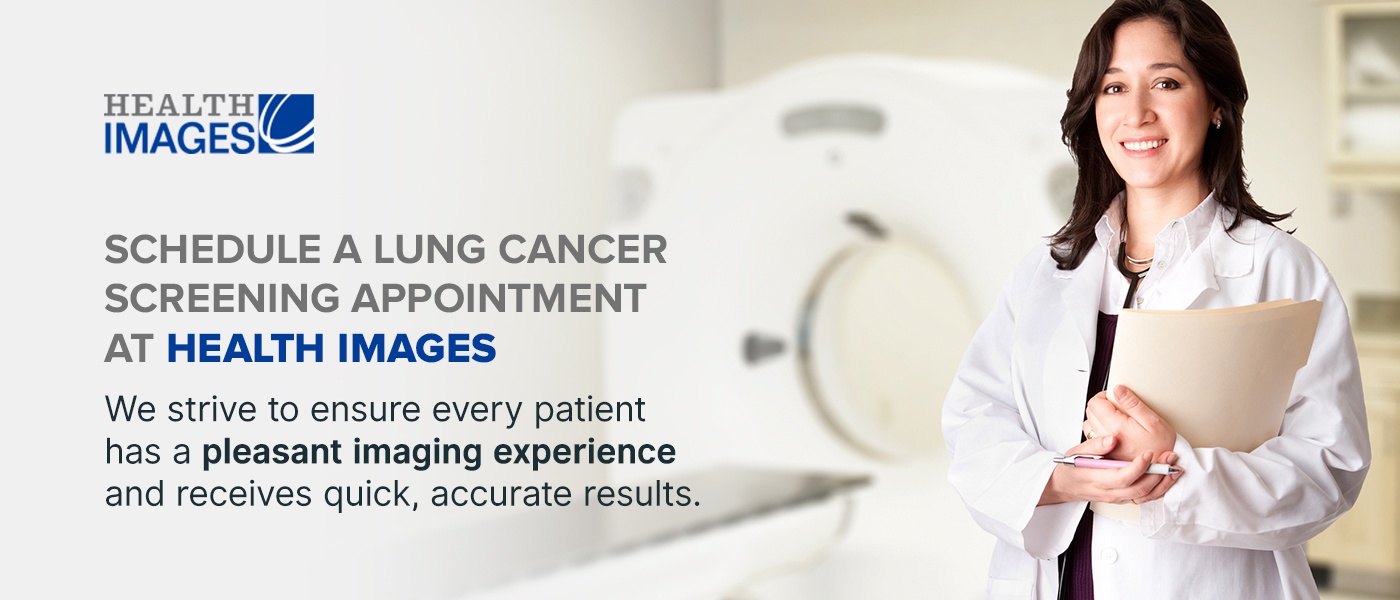Lung Cancer Screening
Although 1 in 16 Americans are diagnosed with lung cancer within their lifetime, an early diagnosis can come with a hopeful prognosis. Finding the disease early can result in more effective treatment and greater chances of recovery. For this reason, routine screening — that is, testing for lung cancer despite not having symptoms or a history of it — is an important component of regular health care.
To help you decide whether a CT lung cancer screening is right for you, this article will discuss who should be screened, the benefits of a lung cancer CT scan and the types of imaging tests available for those who are most at risk of lung cancer.
Who Should Be Screened for Lung Cancer?
Both the American Cancer Society (ACS) and the U.S. Preventive Services Task Force (USPSTF) have recommended yearly lung cancer screenings for people who are at a higher risk of developing the disease. The screening guidelines developed by the ACS and USPSTF are similar, and they are designed to help detect lung cancer early in those who are most at risk.
According to the ACS and USPSTF, those who meet all the following prerequisites should receive an annual lung cancer screening:
-
- History of heavy smoking: The Centers for Disease Control and Prevention (CDC) defines heavy smoking as a smoking history of 20 pack-years or more. A pack-year means the individual smoked an average of one pack of cigarettes each day for the entire year. For example, smoking one pack of cigarettes per day for 20 years and smoking two packs of cigarettes per day for 10 years would both meet the 20-pack-year qualification.
- Currently smoke or have recently quit smoking: Current smokers and those who have quit within the past 15 years have a greater likelihood of developing lung cancer and should get screened. Current smokers who receive counseling to quit smoking, in particular, should consider a screening.
- In fairly good health: Due to the nature of the scan, a lung cancer screening is generally not recommended for those with a preexisting lung condition or breathing complications.
- Have discussed screening with a doctor: Talking with a medical professional about the benefits, limitations and potential risks of a lung cancer screening can help a patient decide whether now is the right time to schedule their screening.
- Older than 50: Those who are between 50 years old and 80 years old and meet the requirements listed above should consider routine lung cancer screenings.
- In-Network with Insurance: Most insurance policies will cover or reimburse a yearly Lung Cancer Screening (LDCT) exam for qualifying patients. If you are not insured, talk to your provider about your care options.
In addition to these stipulations, those with a history of lung cancer or other risk factors of lung cancer, such as chronic obstructive pulmonary disease (COPD) or a family history of lung cancer, may benefit from regular lung cancer screenings.
Benefits of Lung Cancer Screenings
The largest benefit of receiving a lung cancer screening is a lower chance of dying from the disease due to an early lung cancer diagnosis. Although lung cancer accounts for numerous deaths among people who previously or currently smoke, regular screenings can help detect and treat the illness as soon as possible.
Typically, lung cancer is too advanced for curative treatment by the time its most recognizable signs and symptoms begin to show. Because lung cancer is more likely to be cured the earlier it’s diagnosed, the purpose of a lung cancer screening is to catch the disease at its earliest stage. In fact, studies confirm regular lung cancer screenings can reduce the risk of patients dying from lung cancer.
It is important to keep in mind that not all lung cancer screenings catch everything, and even if cancer is found early on via screening, there is still a chance the disease progresses and becomes fatal. There is also a possibility that a lung cancer screening discovers something that turns out not to be cancer, but that requires further testing to determine exactly what it is. Discovering a different health condition early is another benefit of getting screened.
Results from a lung cancer screening may include:
- No abnormalities detected: This is the most desirable outcome for a lung cancer screening because it means the test results showed nothing of concern. Even if no abnormalities were discovered during a screening, a doctor will usually recommend another scan in a year to stay ahead of any major health issues.
- Lung nodules: Lung cancer often appears as a small spot on the lungs. However, a lung nodule does not always mean the patient has lung cancer because many other lung conditions, such as benign growths or scars from lung infections, show up as small spots on the scan.
- Other health issues: A lung cancer screening can also detect other common health problems for those with a history of smoking, such as emphysema or heart artery conditions. A doctor will be able to discuss these results with the patient and help them determine the best course of action.
Types of Tests Used to Diagnose Lung Cancer
A low-dose computed tomography, also referred to as a low-dose CT scan (LDCT), is the only recommended screening test for lung cancer. A lung cancer CT scan of the chest gives the doctor a detailed image of the patient’s lungs, allowing them to assess whether lung cancer or another health problem is present, such as pneumonia or tuberculosis.
During an LDCT scan, the patient lies on a table while an x-ray machine uses a small amount of radiation to record images of their lungs. This lung cancer chest x-ray process takes only a few minutes and is not painful. Once the results are delivered, the patient and their health care provider can determine any next steps.
If an abnormality shows up on the scan, the patient may need a different type of test to get to the root of the issue. Many smaller lung nodules do not require immediate action and can be monitored at the patient’s annual screening. If the nodule grows within that year, it is more likely that it’s cancerous.
Because larger lung nodules are more likely to be cancerous, patients with large nodules are typically referred to a lung specialist for additional tests like a biopsy, in which a piece of the lung nodule is removed and sent to a lab for testing. Other imaging tests, such as a positron emission tomography (PET) scan or more CT scans, may also be required to examine the nodule.
Schedule a Lung Cancer Screening Appointment at Health Images
At Health Images, we provide exceptional radiology services and compassionate care. We strive to ensure every patient has a pleasant imaging experience and receives quick, accurate results. Health Images also accepts a variety of insurance plans, which helps make our excellent care more affordable and accessible.
Ask your provider about ordering a Lung Cancer Screening with Health Images today! Click here to find a Health Images location nearest you.
Sources
- https://lungevity.org/for-supporters-advocates/lung-cancer-statistics
- https://www.cancer.org/cancer/lung-cancer/detection-diagnosis-staging/detection.html
- https://www.uspreventiveservicestaskforce.org/uspstf/recommendation/lung-cancer-screening
- https://www.cdc.gov/cancer/lung/basic_info/screening.htm
- https://www.cdc.gov/cancer/lung/basic_info/screening.htm
- https://www.healthimages.com/types-of-ct-scans/
- https://www.healthimages.com/ct-scan-vs-pet-scan/
- https://www.healthimages.com/locations/






